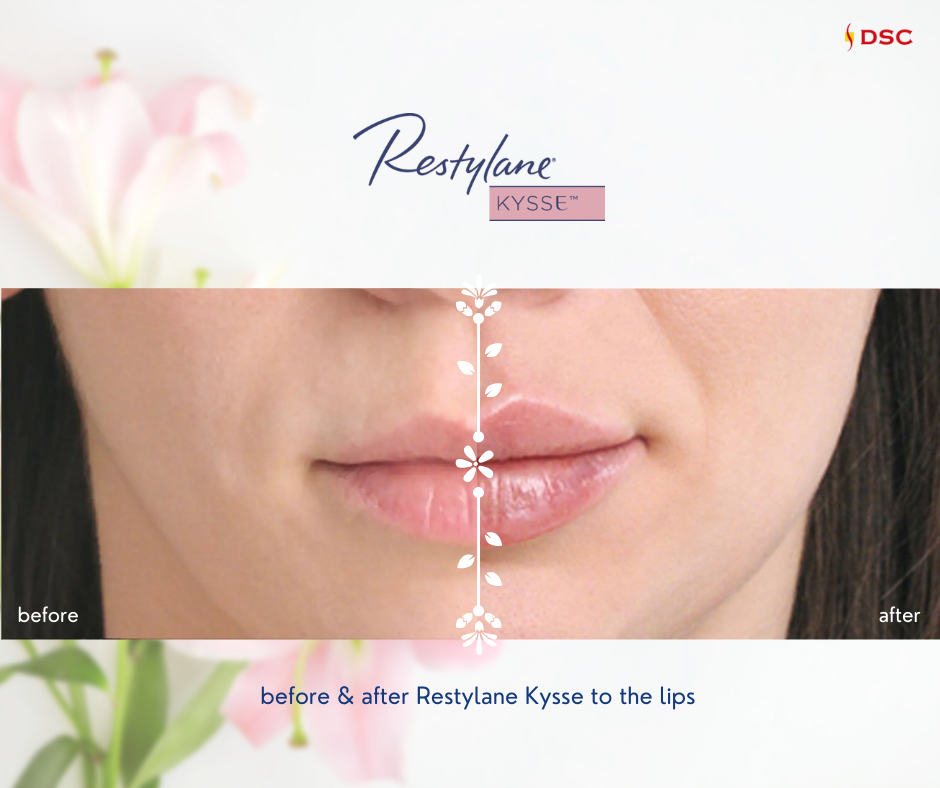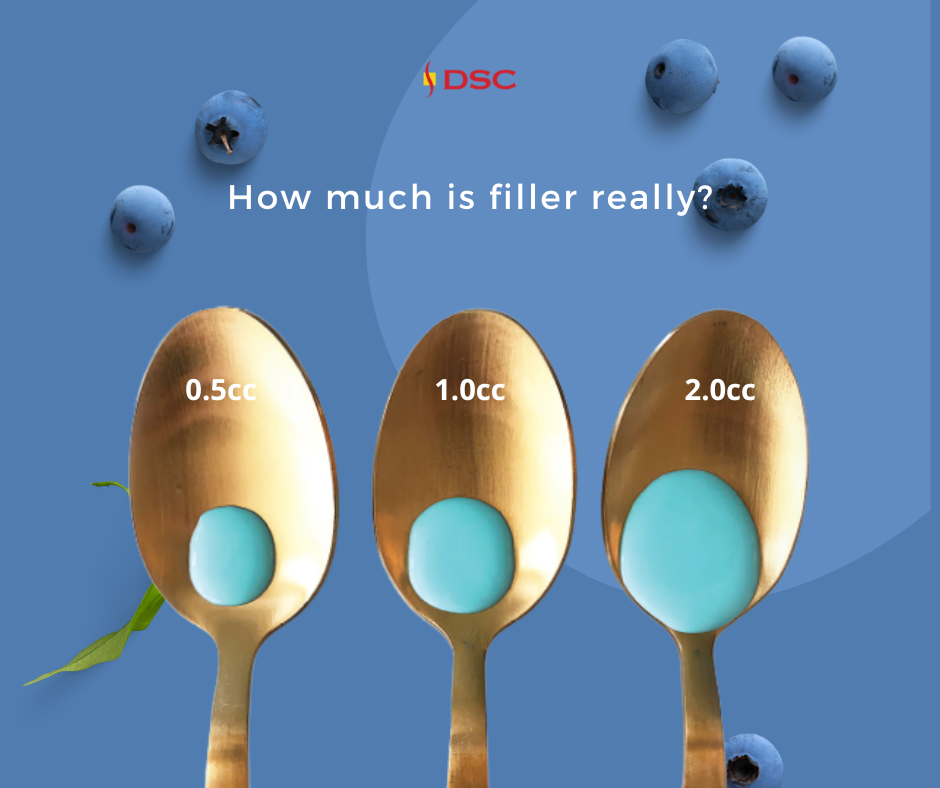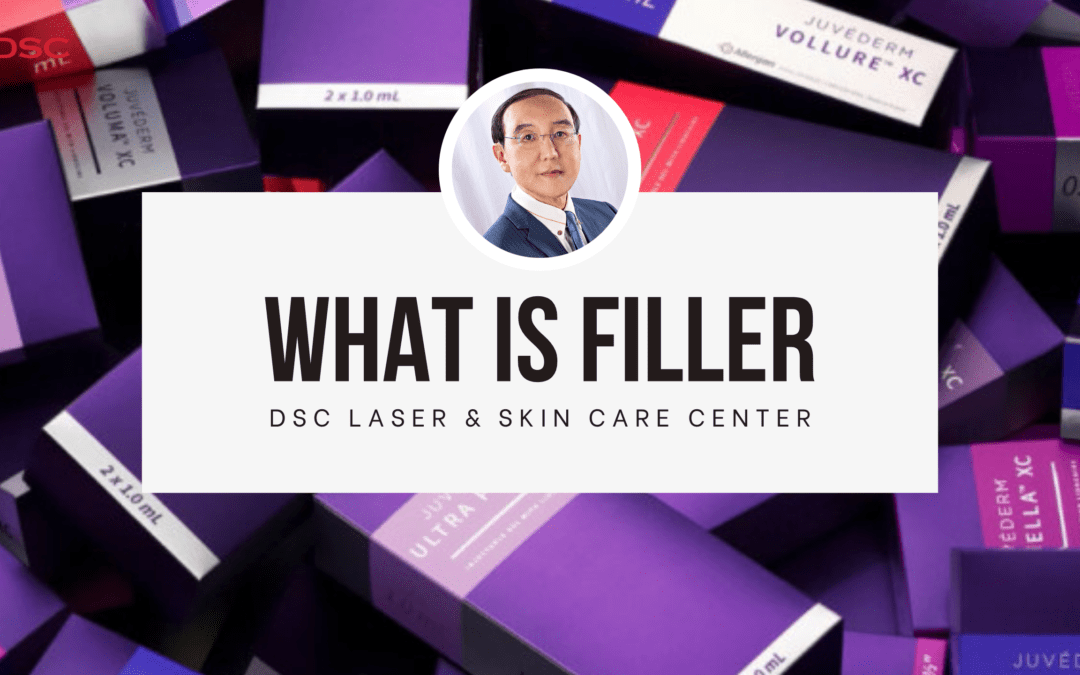Injectable dermal fillers have exploded in popularity over the last several years even though they have been FDA approved for over 15 years. Here’s the lowdown on what they are, what they do, and what you need to know when considering filler treatments.
What is filler?
In terms of aesthetic treatments, dermal fillers are injectable gels that are used to treat age-related volume loss or to change the natural contours of the face. Various brands and versions of filler will have different consistencies and are usually suitable for injecting in different areas. Generally, most fillers are made of hyaluronic acid, or HA, which is a sugar molecule that occurs naturally in the skin and draws water. Many topical skincare products use hyaluronic acid as an ingredient for hydrating the skin. HA dermal fillers plump the areas in which they’re injected.
There are also non-HA dermal fillers approved for aesthetic treatment. Radiesse is notably comprised of calcium hydroxylapatite and cellulose, NOT hyaluronic acid. Sculptra is another dermal filler injectable treatment made of PLLA that is also notably NOT hyaluronic-acid based.
An important distinction to make is that Botox is NOT filler. Botox and other brands of aesthetic neurotoxin treatments are injectable treatments, as are dermal fillers. While often injected together, they have fundamental differences in material and purpose.
Related: Botox vs. Filler
What are fillers used for?
Dermal fillers are used for two purposes: to correct age-related volume loss and to change the natural contours of the face. Dermal fillers were originally FDA-approved to correct hollowness from aging. Part of the natural aging-process in the face is: loss of collagen and elastin in the skin, bone reabsorption, fat pad drooping, and sagging of the skin. Therefore, this leads to changes in facial structure with age – lips become thinner and more inverted, temples and cheeks become hollow, jowls may become apparent, and wrinkles may begin to form. Dermal fillers can be injected to slow the appearance of aging in the face, neck, and hands. Hollow areas can be volumized with filler to correct age-related changes. This can lead to a more youthful appearance.
Fillers can also be used to change the contours of the face, regardless of age. For example, fillers can be injected into the lips for more fullness, into the chin for a more defined jawline or a sharper chin, and even into the nasal bridge to change the profile of the nose. Fillers can even be used to change the contours of the body, such as to the “hip dips” to change the contours of the hips or to the backs of the hands to alleviate aging-related volume loss.


Why are there different consistencies of fillers?
Understanding the difference between thicknesses of fillers requires some basic chemistry knowledge. Hydrogen bonds, weak attractions between molecules, create cross-linked HA molecules. Cross-linking between hyaluronic acid molecules creates larger chains of non-linear HA molecules with greater density and permanence as compared to non cross-linked, linear molecules. Generally, the more cross-linking there is, the firmer the filler. Softer fillers with less cross-linking can be used for delicate areas like the lips, lower eyelid/tear troughs, or superficial areas, while firmer fillers may be used for deeper injection for large-scale volume correction or in bonier areas that can support the filler, such as the jawline, nose, chin, and cheeks. More cross-linking in a filler may also give it more longevity. Of course, depending on the condition of the skin, the outcome that is desired, and the treatment area, different injectors may recommend different types or amounts of fillers.
Radiesse, which contains calcium particles, has the highest G prime of all dermal fillers. This means it has a very firm consistency and holds its shape well. This makes it suitable for certain applications that require a firmer filler. It can also be diluted for less conventional usage, such as to correct certain forms of acne scarring.
How long does filler last?
Depending on area of injection, type of filler, amount of cross-linking, and patient metabolism, filler can last anywhere from several months up to one or two years on average. Areas of high motion or areas that require softer fillers will need to be treated more often. Radiesse and Sculptra may last longer due to their composition, but cannot be dissolved if you are dissatisfied with results. HA-based fillers can be dissolved with hyaluronidase, an enzyme that breaks up the links between hyaluronic acid molecules.
What is the difference between brands of fillers?
Various aesthetics companies have different brands of FDA-approved injectable fillers for cosmetic use in the USA. Allergan, the makers of Botox, are the makers of the Juvederm family of fillers. The Juvederm line includes: Juvederm Ultra XC, Juvederm Ultra Plus XC, Volbella XC, Vollure XC, Voluma XC, and Volux XC. Galderma Aesthetics has the Restylane family of fillers, and were the first HA fillers to market in the USA. The Restylane line includes: Restylane Silk, Restylane L, Restylane Lyft, Restylane Kysse, Restylane Refyne, Restylane Defyne, and Restylane Contour. Galderma is also the maker of Sculptra. Merz Aesthetics is the maker of Belotero Balance and Radiesse. There are a few other FDA-approved fillers that DSC does not carry. Additionally, there are many other brands of dermal fillers available in international markets that do not yet have FDA approval in the USA.
Related: What is Sculptra?
How soon will I see results?
Because filler volumizes, you can see results immediately post-treatment. However, along with any other type of injection, temporary swelling, redness, soreness, and even bruising may be immediately apparent post-treatment, so final results may take several days to weeks. For example, lip filler tends to cause a lot of swelling post-treatment. Aesthetic treatments with filler should only ever be to the correct amount at the time of treatment. Your provider should never over-treat to compensate for the swelling that will dissipate after treatment. Because of this, it may require more than one treatment in order to achieve the most optimal aesthetic results.
How much filler do I need?
Most fillers come in 1.0cc syringes, with the notable exceptions of Radiesse and Sculptra. Radiesse comes in 1.5cc syringes, while Sculptra comes in powder form and is reconstituted before injection. 1.0cc is equivalent to 1 mL, which is about the size of a blueberry for a scale reference. Number of areas treated and expectations for treatment will dictate the amount of filler necessary. Contour changes in one area may be able to be achieved with conservative amounts of filler, but large areas of volume-loss may require a significant amount of filler. For anti-aging purposes, filler can be combined with laser treatments, injectable neurotoxins, and other skin tightening and lifting treatments for more comprehensive results.

Related: Energy-Based Skin Treatments
DSC Laser & Skin Care Center
www.dscbeauty.com
(626)285-0800
info@dscbeauty.com
889 S. San Gabriel Blvd. San Gabriel, CA 91776
